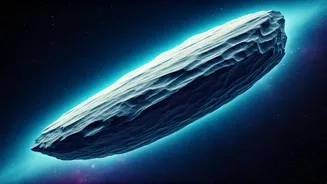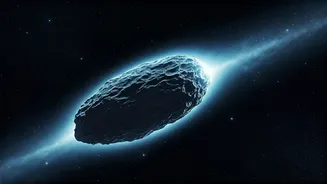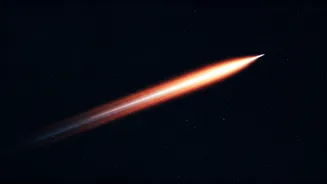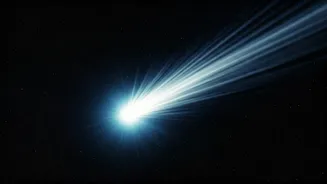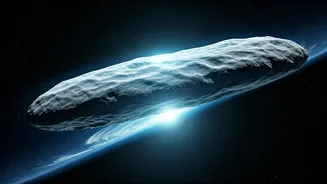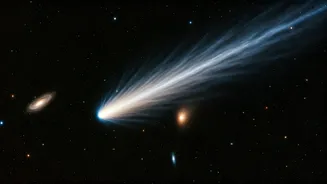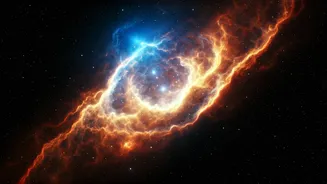An Unexpected Discovery
The discovery of comet 3I/ATLAS quickly became a topic of discussion among scientists and space enthusiasts alike. The comet's trajectory and characteristics
raised numerous questions, leading to speculation that it might be an alien 'Trojan Horse' or a 'Black Swan' event. This unexpected celestial visitor sparked global interest, making headlines and prompting intense scrutiny of its potential implications. Scientists had to assess the potential threats and the importance of continuous monitoring. The anticipation grew as experts investigated the comet's properties and potential origins, fueling the public's imagination and curiosity.
The 'Trojan Horse' Hypothesis
The idea of 3I/ATLAS as an alien 'Trojan Horse' is an imaginative scenario. Some speculated that the comet could be a disguised interstellar probe or a vessel carrying unknown entities. This theory suggested that the comet's seemingly harmless appearance might conceal a more sinister purpose. The 'Trojan Horse' concept gained traction, presenting a blend of scientific inquiry and science fiction. Some people looked at the possibility with excitement, anticipating an extraordinary encounter, while others approached it with caution, concerned about the potential risks posed by an unfamiliar presence. This hypothesis highlights the vast unknowns of space exploration and the potential for unexpected discoveries.
The 'Black Swan' Event
In contrast to the alien hypothesis, others considered 3I/ATLAS a 'Black Swan' event. This concept refers to a rare, unpredictable, high-impact occurrence that defies expectations. According to this perspective, the comet's unusual nature and trajectory suggest it could be a previously unknown phenomenon. Such events can shake up the world as they are. This interpretation emphasizes the unexpected nature of the universe. The 'Black Swan' perspective focused on the unpredictability and the need for preparedness. Scientists analyzed the comet to understand its behavior and potential effects. This highlights the importance of adaptability and vigilance in the face of cosmic surprises.
NASA's Official Stance
NASA took a measured approach to the 3I/ATLAS situation, aiming to clarify the public's understanding and allay any unwarranted fears. The agency adopted the official stance that there was no immediate threat. It also emphasized the importance of continued observation and research. NASA's objective was to rely on scientific evidence and expertise to monitor the comet's behavior. NASA's position highlighted the value of clear communication and evidence-based decision-making. Despite not finding immediate danger, NASA underscored the importance of vigilance. Through rigorous observation and data analysis, NASA helped to keep the situation in perspective. Its approach ensured that both scientific and public attention was focused on the relevant facts.
Scientist’s Concerns Explained
Scientists' concerns stemmed from the comet's peculiar characteristics and the potential for unforeseen impacts. They recognized that even if 3I/ATLAS wasn't an alien spacecraft, it could still present various scientific challenges or dangers. The comet's trajectory and composition were analyzed to assess its potential threat to Earth. These scientists highlighted the importance of understanding the risks associated with celestial objects. Their analysis served to enhance our awareness. Their proactive approach underscores the need to address and prepare for cosmic occurrences. Their concerns prompted deeper scientific investigations and helped create a strong emphasis on space exploration and planetary protection.
Global Alarm and Impact
The arrival of 3I/ATLAS sparked global attention, triggering widespread discussion and debate. Media coverage and public interest intensified as experts debated its origins and possible implications. The event prompted the discussion of space exploration. Governments, scientists, and the public all took part. They also assessed the significance of space threats and global preparedness. The global alarm highlighted the interconnectedness of our world. It further demonstrated the necessity of international cooperation in monitoring space and dealing with celestial threats. The public's enthusiasm and attention showed how important our place in the cosmos is.
